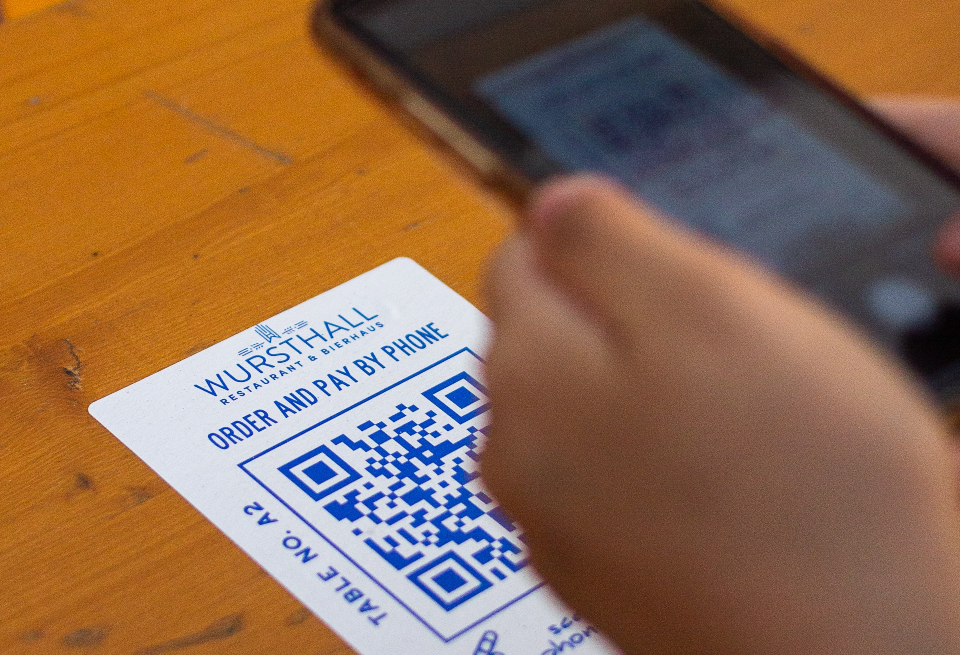Three Ways QR Codes Alleviate Economic Downturn Stresses in the Restaurant Industry
3 Min Read By Sharat Potharaju
Restaurants are bracing themselves for the effects of an economic downturn. Roughly 43 percent of restaurant operators believe economic conditions will worsen in the coming months. They worry because rising food costs and inflation go hand-in-hand.
The rising expense of food and supplies is trending ahead of inflation rates causing restaurant margins to plummet. Restaurant profit margins are typically low, coming in at an average of three-to-five percent.
And lower margins lead to more significant numbers of restaurant owners struggling to keep their heads above water. In June 2022, for example, 38 percent of small restaurant owners could not pay their rent.
Today’s restaurant owners have options to alleviate the stresses and economic impacts felt within their industry. Enter the implementation of QR (quick response) code generators for marketing and business processes. QR codes help restaurants preserve their bottom lines by enabling them to:
- Adjust menu items without reprinting paper menus.
- Promote online ordering and payment.
- Send targeted marketing messages.
As the country continues navigating around economic woes, restaurants — in particular — must use QR codes to cut costs and streamline business processes.
Understanding QR Codes
QR codes take advantage of the ubiquitousness of smartphones, which can digitally read these barcodes to grant users quick access to information for making calls, sending messages and opening websites or documents. These easy-to-scan codes allow users to view the code’s contents immediately or click on an external link upon scanning.
Unlike standard bar codes — limited to storing just 20 digits of data — QR codes can hold several hundred times more data. QR codes also are dirt and damage resistant and offer 360-degree readability.
To scan a QR code, users activate their smartphone’s camera app and point the camera at the code.
During the COVID-19 pandemic, QR codes found their moment to shine in the restaurant industry. Their biggest benefit? Enabling patrons to bypass physical menus and access digital ones instead. By avoiding the potentially virus-spreading surfaces of a physical menu, restaurants lowered the risk of spreading COVID-19 amongst their workers and customers.
Similar to how QR codes helped restaurants adjust to operating during a global pandemic, the technology can now ease the negative effects of an economic downturn.
Restaurants, QR Codes and the Economic Downturn
As restaurants look to cut costs and optimize their business processes, QR codes remain one of the simplest, most effective ways to get the job done. No matter which cost-saving routes restaurant owners choose, QR codes can help restaurant owners save money on supplies, labor and marketing.
Saving Money by Going Paperless
QR code payments cut supply costs by eliminating the need for paper to produce physical menus. For a standard sheet of full-color menu paper, restaurants typically pay an average of 69 cents a sheet or $69 for a bundle of 100 sheets. While these numbers may not seem too high at first glance, the costs increase over time. And for restaurants prioritizing money-saving habits, going digital is the easiest way to start protecting operating budgets.
Also, since QR codes generate paperless menus, restaurants don’t need to worry about the cost of reprinting items to correct any mistakes, adjust prices, update food choices, change specials and much more. Anytime they need to update, restaurant owners can easily make those QR code changes online.
Online Ordering and Payments
The pandemic sent online food orders skyrocketing. Online ordering and payments were essential in keeping many restaurants afloat during the COVID-19 crisis — especially for short-staffed businesses due to cost-saving layoffs. Unfortunately, many companies are in the same position today due to economic uncertainties.
Picture this: a restaurant makes the difficult decision to downsize. However, that doesn’t mean buyer demand falls. Restaurant owners must have a simplified process to allow buyers to order and pay independently. QR codes fill the gaps left behind by streamlining the ordering and payment process. Customers can make those orders and payments without a restaurant employee just by using their smartphone.
Targeted Marketing Messages
Building an app that includes menus, payment options and marketing messages for restaurants is expensive. Current estimates show restaurant apps sometimes cost $10,000 or more.
Restaurant owners should use a more cost-effective, customer-centric approach to marketing by prioritizing QR code campaigns in lieu of relying on apps to deliver marketing messages. User-friendly QR codes simplify directing customers to social media pages or requesting feedback via online reviews. Starting this process merely requires a customer to aim their camera phone at the QR code. Restaurants don’t need an app — which many customers may not want to download or navigate — because the QR code links directly to a specific destination, like a menu, review, or social media pages.
The last few years have served as a reminder that modern technologies like QR code generators are business lifesavers.
In the food industry, restaurants using QR codes save 30-50 percent on labor costs. This essential tool saves restaurant owners money and keeps their business operations thriving during struggling — and flourishing — economies.


